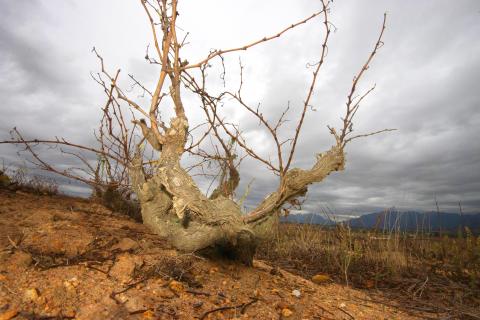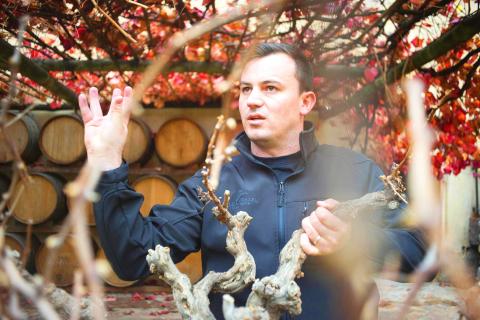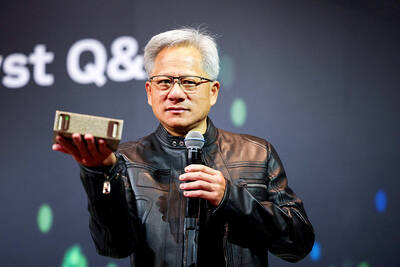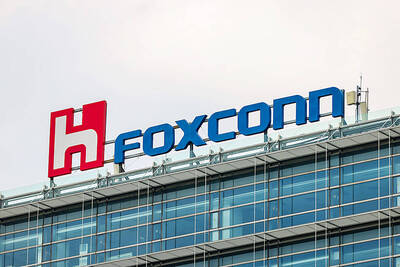Gnarled and gnomish, the vines that produced the best white in one of the world’s top wine competitions crouch low and untrellised amid more traditional vineyards in South Africa’s scenic Cape winelands.
The Chenin Blanc made from these 40-year-old “bush vines” beat global competition across the full range of white wines to take the top spot in this year’s Concours Mondial de Bruxelles, which tested a total of 8,000 wines.
Winemaker Reginald Botha says the Kleine Zalze estate outside Stellenbosch set out to build a wine that tasted of “elegance.”

Photo: AFP
Given that more than 320 experts from about 50 countries chose the 2013 Kleine Zalze Family Reserve as best white at the 22nd edition of the Concours Mondiale in Italy this month, they must have succeeded.
However, elegance is not a word that springs to mind when looking at the denuded bush vines amid the autumnal beauty of the surrounding landscape.
Unlike trellised vines, they are three-dimensional, with at least five arms rather than two, and stand about knee-high.

Photo: AFP
Bush vines are less productive than trellised vines because they provide a greater canopy of leaf coverage to the fruit. They are also labor-intensive as they cannot be harvested by machine.
However, their advocates say the lower yield and greater effort are worth it because the berries have much thicker skins and therefore produce more concentrated flavors.
“The winning Family Reserve comes from three different sites; that’s three different soils,” Botha said.
“All the vines are more than 40 years old and are all bush vines. And they’re unirrigated,” he said.
“We get smaller berries, thicker skins, so there is a lot more concentration of flavors in your grapes and a lot of different microclimates in one vine,” he added.
“On a trellised vine all the grapes are in one segment so have almost the same microclimate, whereas in a bush vine, especially these old ones, one bunch is open, one is closed, one is a little bit closer to the soil,” he said.
“There’s so many different microclimates in each little vine, it just brings out the complexity — there are more different flavor profiles in one vine, and that makes for wonderful wine,” he said.
The winemaker’s tasting notes describe “concentrated aromas of lime, winter melon and apple fruit on the nose, with layers of citrus and herbs on the palate” and “a creamy mouth feel and an elegant, long, fresh, earthy finish.”
Bush vines make up less than 10 percent of South African vineyards, and many farmers are pulling them out because of the lower yields and higher labor costs, Botha said.
The Chenin bush vines produce between three and five tonnes a hectare, compared with more than 10 tonnes from trellised vine.
The vines may be old, but Kleine Zalze, which has produced grapes since 1695 and is now owned by Kobus and Mariette Basson, has a state-of-the-art cellar.
“We let the wine do the talking,” Botha said, as he described the minimal interference in the process from vine to bottle.
Kleine Zalze wines retail in South Africa for between 40 rand and 250 rand (US$3.30 and US$20.60) a bottle.
The 2013 Family Reserve Chenin Blanc was on sale for just 148 rand when it was crowned as the best white in the world.
South African wine exports have boomed since the lifting of international boycotts at the end of the racist apartheid system 21 years ago, and some hope that Chenin Blanc will raise the nation’s profile the way that Sauvignon Blanc did for New Zealand. Total exports grew from 99.9 million liters in 1996 to an all-time high of 417 million liters in 2012, with Britain the most important market, followed by Germany and Sweden, according to the producers’ group Wines of South Africa.
The latest available figures, from 2011, rank South Africa as the eighth-largest wine producer in the world — behind Chile in seventh place and ahead of Germany in ninth — the wine group said.

SEEKING CLARITY: Washington should not adopt measures that create uncertainties for ‘existing semiconductor investments,’ TSMC said referring to its US$165 billion in the US Taiwan Semiconductor Manufacturing Co (TSMC, 台積電) told the US that any future tariffs on Taiwanese semiconductors could reduce demand for chips and derail its pledge to increase its investment in Arizona. “New import restrictions could jeopardize current US leadership in the competitive technology industry and create uncertainties for many committed semiconductor capital projects in the US, including TSMC Arizona’s significant investment plan in Phoenix,” the chipmaker wrote in a letter to the US Department of Commerce. TSMC issued the warning in response to a solicitation for comments by the department on a possible tariff on semiconductor imports by US President Donald Trump’s

‘FAILED EXPORT CONTROLS’: Jensen Huang said that Washington should maximize the speed of AI diffusion, because not doing so would give competitors an advantage Nvidia Corp cofounder and chief executive officer Jensen Huang (黃仁勳) yesterday criticized the US government’s restrictions on exports of artificial intelligence (AI) chips to China, saying that the policy was a failure and would only spur China to accelerate AI development. The export controls gave China the spirit, motivation and government support to accelerate AI development, Huang told reporters at the Computex trade show in Taipei. The competition in China is already intense, given its strong software capabilities, extensive technology ecosystems and work efficiency, he said. “All in all, the export controls were a failure. The facts would suggest it,” he said. “The US

The government has launched a three-pronged strategy to attract local and international talent, aiming to position Taiwan as a new global hub following Nvidia Corp’s announcement that it has chosen Taipei as the site of its Taiwan headquarters. Nvidia cofounder and CEO Jensen Huang (黃仁勳) on Monday last week announced during his keynote speech at the Computex trade show in Taipei that the Nvidia Constellation, the company’s planned Taiwan headquarters, would be located in the Beitou-Shilin Technology Park (北投士林科技園區) in Taipei. Huang’s decision to establish a base in Taiwan is “primarily due to Taiwan’s talent pool and its strength in the semiconductor

French President Emmanuel Macron has expressed gratitude to Hon Hai Precision Industry Co (鴻海精密) for its plan to invest approximately 250 million euros (US$278 million) in a joint venture in France focused on the semiconductor and space industries. On his official X account on Tuesday, Macron thanked Hon Hai, also known globally as Foxconn Technology Group (富士康科技集團), for its investment projects announced at Choose France, a flagship economic summit held on Monday to attract foreign investment. In the post, Macron included a GIF displaying the national flag of the Republic of China (Taiwan), as he did for other foreign investors, including China-based